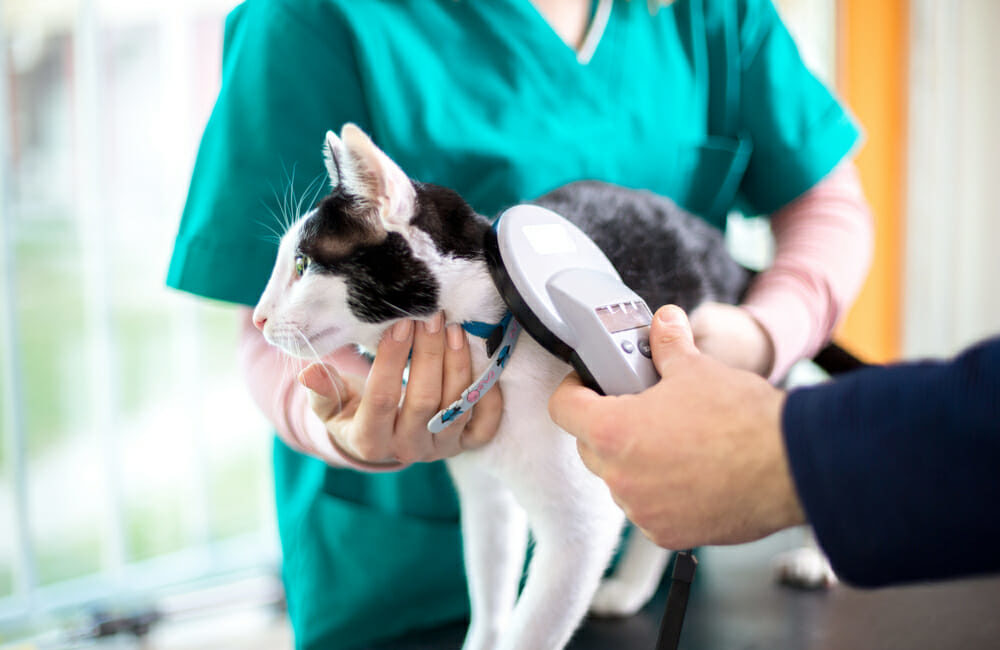Microchips are small computerized chips, about the size of a grain of rice. They are implanted under your pet’s skin by a veterinarian using a needle, similar to a vaccination. Every microchip carries a unique registration number that is associated with the owner’s name and contact information. The registry information on the microchips can be read using a handheld reader. It displays the unique registration number so that the owner can be identified.
Microchips are a permanent form of identification. Unlike collars and tags, they cannot be removed. Tags on collars can often break or fall off or can be removed by a person. Microchips are implanted under the skin, so they cannot be removed without requiring an anesthetic.
Microchips help reunite lost pets with their families. If your pet goes missing, they are twice as likely to be returned home than pets without microchips. Microchips help prevent the theft of pets. Yes, as awful as it is, this is something that happens! A pet, especially a purebred, has the potential to be stolen, often to be re-sold online. Microchips cannot be tampered with by other people, which helps to increase the chance of your pet being found.
Travel with ease. When travelling outside Canada and the US, most countries will require your pet to be microchipped with an ISO standard microchip. Specific tests and vaccinations are also required with taking your pet over the border. Getting a pet microchipped at a young age, cuts down on vet visits, cost and wait time if you plan to travel with them in the future.
Affordable source of permanent identification. Microchips will cost, on average, between $30-$50. It is a one-time fee to pay for permanent identification. Tags can cost $15-$20 and have the potential to break or become lost; that price can add up throughout a pets lifetime.
Written by: Torbay Road Animal Hospital




